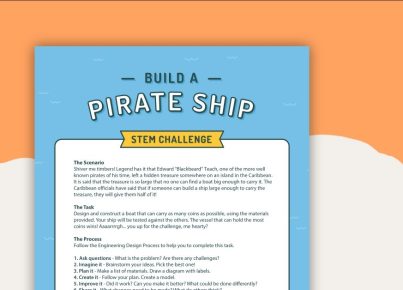In recent years, the importance of Science, Technology, Engineering, and Mathematics (STEM) education has been recognized as a cornerstone for future innovation and economic growth. As the world evolves at an accelerating pace, integrating STEM into classroom teaching is crucial in preparing students for the demands of the future job market and in fostering a new generation of problem-solvers and creators.
STEM education refers to a curriculum based on the idea of educating students in four specific disciplines — science, technology, engineering, and mathematics — through an integrated approach. Instead of teaching these subjects separately, STEM integrates them into a cohesive learning paradigm that mirrors real-life scenarios.
The rise of STEM in education is not merely a trend; it’s a response to the current and future demands of our technological societies. By immersing students in interdisciplinary projects, STEM education fosters an environment for students to develop critical thinking skills and encourages innovative approaches to problem-solving. It also provides an educational space where creativity meets functionality, allowing children to exercise their imagination while building a strong foundation in essential skills that transcend academic boundaries.
One of the key advantages of incorporating STEM into the classroom is its ability to provide context to theoretical concepts. This happens through hands-on experimentation, project-based learning, and inquiry-based activities. Students are more inclined to engage deeply with the subject matter when they see its relevance to everyday life. For example, understanding ratios and proportions becomes much more compelling when constructing a model bridge or calculating the right mixtures for a chemical experiment.
Moreover, STEM education promotes collaboration among students. Many STEM activities require teamwork as learners come together to solve problems, exchange ideas, and divide work according to individual strengths. These collaborative efforts help build communication skills and leadership qualities that are invaluable in all areas of life.
Another significant aspect of STEM teaching is its inclusivity. STEM subjects have historically been male-dominated fields; however, current educational strategies emphasize engaging underrepresented groups such as girls and minority students. By creating inclusive learning environments that challenge stereotypes, schools can encourage diverse populations to pursue careers in STEM fields.
Technology plays a major role too. In this digital age where tech is ubiquitous, integrating technological tools into education is paramount. From using tablets for research to programming robots for scientific experiments, technology enriches the learning experience and prepares learners for technologically driven workplaces.
Despite these benefits, there are challenges facing the integration of STEM into classrooms. These include training educators who can effectively teach an interdisciplinary curriculum and ensuring schools are equipped with the necessary resources. Moreover, measuring student success in these programs can be complex due to their dynamic and practical nature.
To tackle these issues head-on, it’s important for educational leaders to invest in professional development for teachers and procure classroom resources that facilitate interactive learning. Engagement with industry partners can also bring real-world expertise into classrooms while providing insight into current trends within STEM fields.
In conclusion, STEM education is not just about producing scientists or engineers; it’s about shaping adaptable thinkers who can contribute meaningfully to society with innovation at their core. Programs designed to incorporate STEM disciplines help students cultivate a diverse skill set that primes them for success no matter where their career paths may lead them. As we educate today’s youth with this forward-thinking approach, we pave the way for talented individuals who will spearhead progress across all sectors tomorrow.





